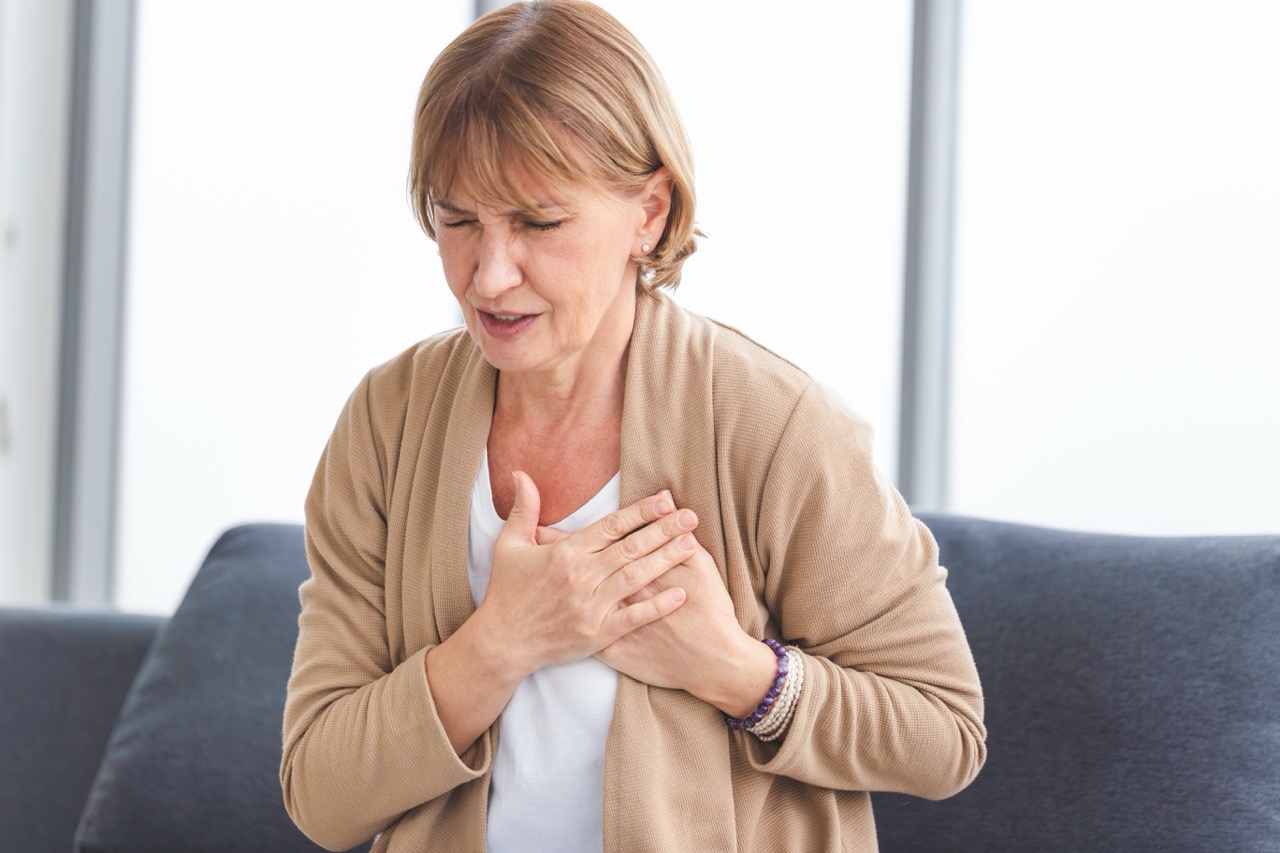Lifestyle Changes After Heart Attack or Stroke
What motivates people to change? For some, it’s the pull of a deeply desired goal. For others, it’s the push of fear or the hope of avoiding something painful. Either way, change rarely happens without some kind of catalyst. A heart attack or stroke may seem like one of the strongest motivators for a healthier lifestyle, yet research shows that many survivors do not make lasting changes.
This reality can be surprising and even unsettling. If surviving such a serious health event isn’t enough to spark new habits, what is? The answer lies in the complex interplay between physical health, mental health, and the everyday challenges people face.
Recovery is not just about medication and medical procedures. It also requires emotional resilience, motivation, and support systems that empower people to turn intention into action.

The Study on Lifestyle Changes
A large international study published in the Journal of the American Medical Association followed more than 150,000 adults across multiple countries to see whether people made changes after a heart attack, stroke, or other cardiac event [1]. The findings highlighted both encouraging progress and troubling gaps in recovery behaviors.
Here’s a snapshot of what researchers discovered among more than 7,500 participants who experienced a cardiac event:
| Lifestyle Change | Percentage of Participants Who Improved | Notes |
| Stopped smoking | 52% | The most successful area of change |
| Adopted healthier eating | 39% | Significant but still less than half |
| Increased physical activity | 35% | The most difficult change to maintain |
| Made changes in all three areas | 4.3% | Very few achieved a full lifestyle shift |
| Made no changes at all | 7% of women, 26% of men | Gender differences were striking |
The study also revealed differences by location. People living in urban areas were more likely to change their habits than those in rural regions, possibly due to greater access to resources such as rehabilitation programs, gyms, or healthier food options.
Perhaps the most concerning finding was that only 10–20% of eligible patients enrolled in cardiac rehabilitation programs, even though these programs are proven to improve recovery and reduce the risk of another event [2].
Why Change Is So Hard
If a life-threatening event like a heart attack or stroke doesn’t guarantee a change in behavior, what gets in the way? The answer is not simple. Making lifestyle changes is a deeply personal process shaped by psychology, emotions, environment, and access to resources.
One barrier is denial. Some survivors downplay the seriousness of their condition, convincing themselves that the event was a one-time scare rather than a signal to shift daily habits. Others struggle with fear. The idea of facing another attack can be so overwhelming that it leads to avoidance instead of action.
Emotional health plays a major role too. Depression and anxiety are especially common after cardiac events [3], and we’ll explore their impact in more detail in the next section. For those who want to better understand their inner world, working on emotional intelligence and self-awareness can be a powerful first step.
Practical challenges also matter. People in rural areas often have limited access to rehabilitation programs or fitness facilities. Work schedules, caregiving responsibilities, or financial stress can also make it difficult to prioritize health.
Without adequate follow-up care or community support, even the most motivated patients may struggle to sustain new habits. Psychosocial stress, such as workplace strain, further increases the risk of recurrent events [4].
Recognizing these obstacles is important because it shifts the focus away from blaming individuals and toward creating supportive environments where change becomes more possible.
The Mental Health Connection
Recovering from a heart attack or stroke is not only about healing the body. It is also about navigating the emotional and psychological aftermath of such a major event. Many survivors describe the experience as a wake-up call, but it can also trigger feelings of vulnerability, loss of control, and uncertainty about the future.
- Depression is especially common after cardiac events.Some people feel a profound sadness or hopelessness as they face new limitations in their daily lives. Others may withdraw socially, which can deepen isolation and delay recovery [3].
- Anxiety is another frequent response. Worries about another heart attack or stroke can create constant vigilance, where every twinge or flutter feels like a warning sign. This heightened state of alert can increase stress hormones, which in turn negatively affect cardiovascular health, creating a difficult cycle to break. Large cohort studies confirm that depression and anxiety among survivors increase the risk of mortality and recurrent events [5].
- Stress itself has a powerful effect on heart health. Chronic stress raises blood pressure, strains the cardiovascular system, and makes it harder to maintain healthy behaviors such as good sleep, balanced eating, and regular exercise.
The good news is that tending to mental health is just as important as following a physical recovery plan.
Addressing depression, anxiety, and stress not only improves emotional well-being but also strengthens the likelihood of making and sustaining healthy lifestyle changes. Participation in cardiac rehabilitation has been shown to reduce depressive symptoms and improve quality of life [6].
An Action Guide for Building Motivation and Resilience
Lasting change requires more than good intentions. It takes motivation, resilience, and the right support to turn new habits into daily life. This action guide offers strategies that can help survivors, as well as anyone facing a big change, find their footing and keep moving forward.
- Clarify your “why”: Change is easier when it feels personally meaningful. Write down the reasons you want to adopt healthier habits. Maybe it’s spending more time with loved ones, regaining independence, or avoiding another hospital stay. Returning to these reasons during moments of doubt can keep motivation alive.
- Start small: Large goals can feel overwhelming. Instead of aiming to completely overhaul your diet or exercise routine overnight, focus on small, realistic steps. For example, begin by walking for 10 minutes a day or swapping one sugary snack for fruit. These small wins build momentum.
- Track progress: Keeping a journal or using an app to record your efforts provides a sense of accomplishment. Celebrate progress, even if it feels modest. Progress tracking turns invisible effort into something visible and rewarding.
- Lean on support systems: Social support is a powerful motivator. Ask friends, family, or peers to join you in healthy activities, or share updates with someone who will cheer you on. Group programs and online communities can also offer encouragement and accountability.
- Strengthen resilience: Resilience helps people recover from setbacks and stay committed. Practices like mindfulness, breathing exercises, or journaling can reduce stress and sharpen focus. Therapy or counseling can provide deeper tools for managing emotions and sustaining change.
- Reframe setbacks: Everyone experiences slip-ups. Missing a walk or indulging in unhealthy food does not erase progress. Instead of viewing setbacks as failure, reframe them as learning opportunities. Ask: What triggered this moment, and how can I respond differently next time?
- Seek professional help: Healthcare providers, dietitians, or mental health professionals can guide you through lifestyle changes. Having a trusted professional to check in with adds accountability and provides tailored advice. Evidence shows that exercise-based cardiac rehabilitation not only improves physical outcomes but also reduces depression severity [2].
By practicing these strategies, survivors can build not only healthier habits but also a mindset that supports long-term well-being.
Practical Steps for Recovery
Lifestyle changes after a heart attack or stroke often center on three areas: quitting smoking, improving diet, and increasing physical activity. Each of these steps can significantly reduce the risk of another cardiac event, but they also require mental and emotional support to become lasting habits.
Quitting smoking remains one of the most powerful ways to protect the heart, and it was the most common change reported in the international study. Yet the process is rarely straightforward. Withdrawal can trigger irritability, anxiety, or low mood, which makes quitting feel overwhelming.
Resources such as counseling, nicotine replacement therapy, and support groups provide vital tools. Pairing these with stress management practices, like mindful breathing or short walks, can increase the likelihood of success.
Improving diet is another cornerstone of recovery. A heart-healthy approach emphasizes fruits, vegetables, whole grains, and lean proteins. Beyond physical benefits, nutrient-dense foods stabilize blood sugar, improve energy, and even help regulate mood. Working with a dietitian can make dietary changes more realistic and culturally relevant, increasing the chances they will last over the long term.
Physical activity offers a unique double benefit. It strengthens the cardiovascular system while also supporting mental health. Exercise reduces depression and anxiety, improves sleep, and builds confidence [2]. Survivors who feel intimidated can begin with small steps, such as a short daily walk or gentle stretching, and build gradually. Adding a social element, like walking with a friend or joining a group class, can make exercise more enjoyable and sustainable.
These habits are not only physical interventions. They are also emotional ones, creating positive feedback loops that enhance both heart health and mental well-being.
Overcoming Barriers
Even with strong motivation, survivors often face obstacles that make lifestyle changes difficult. Some of these are external, while others come from within. Acknowledging and addressing these barriers can prevent discouragement and help keep progress on track.
- Limited access to resources: In many rural areas, cardiac rehabilitation programs, gyms, or nutrition counseling services are scarce. Telehealth appointments, online exercise programs, and virtual support groups can bridge the gap when local resources are unavailable.
- Time and financial pressures: Many adults juggle work, caregiving, and financial stress, leaving little time for self-care. Small changes, like cooking simple, affordable meals or adding a short walk during a lunch break, can make a difference without demanding large amounts of time or money.
- Lack of follow-up care: Short hospital stays and limited outpatient follow-up mean that many patients leave the hospital without ongoing support. Asking healthcare providers about follow-up appointments, community programs, or local support groups can help build continuity of care.
- Emotional fatigue: Sometimes the hardest barrier is the emotional toll of recovery. Fatigue, worry, and discouragement can weigh heavily. In these moments, support from loved ones, counseling, or peer groups can provide encouragement and reduce the sense of isolation. Programs designed to improve adherence in underserved populations have shown promise [7].
Overcoming these barriers requires both practical strategies and emotional support. When survivors recognize that obstacles are part of the journey and not a sign of weakness, they are more likely to keep moving forward.
A Healthier, More Fulfilling Life
Recovering from a heart attack or stroke is about much more than repairing the body. It is about reshaping daily life in ways that nurture both physical and mental well-being. While studies show that many survivors struggle to make lasting changes, the barriers are not insurmountable. With motivation, resilience, and the right resources, new habits can take root and flourish.
The journey is rarely linear. There will be setbacks, doubts, and days when change feels out of reach. Yet every small step, whether it’s choosing a healthier meal, going for a short walk, or reaching out for support, builds momentum. Over time, these steps add up to meaningful progress that strengthens both the heart and the mind.
For anyone recovering from a cardiac event, the most important takeaway is that change is possible. By clarifying personal reasons for change, seeking emotional and practical support, and reframing challenges as part of the process, survivors can move toward a healthier, more fulfilling life.
- Teo, K., Lear, S., Islam, S., et al. (2013). Prevalence of a healthy lifestyle among individuals with cardiovascular disease in high-, middle- and low-income countries: The Prospective Urban Rural Epidemiology (PURE) study. Journal of the American Medical Association, 309(15), 1613–1621. https://pubmed.ncbi.nlm.nih.gov/23592106/
- Dibben, G., Faulkner, J., Oldridge, N., Rees, K., Thompson, D. R., Zwisler, A. D., & Taylor, R. S. (2021). Exercise-based cardiac rehabilitation for coronary heart disease. Cochrane Database of Systematic Reviews, 11, CD001800. https://pubmed.ncbi.nlm.nih.gov/34741536/
- Frasure-Smith, N., & Lespérance, F. (2003). Depression and other psychological risks following myocardial infarction. Archives of General Psychiatry, 60(6), 627–636. https://pubmed.ncbi.nlm.nih.gov/12796226/
- Li, J., Zhang, M., Loerbroks, A., Angerer, P., & Siegrist, J. (2015). Work stress and the risk of recurrent coronary heart disease events: A systematic review and meta-analysis. International Journal of Occupational, Medical, and Environmental Health, 28(1), 8–19. https://pubmed.ncbi.nlm.nih.gov/26159942/
- Cha, S., Chang, W. K., Lee, K., Han, K., Paik, N. J., Kim, W. S. (2024). Prevalence and impact of depression and anxiety among older myocardial infarction survivors: A nationwide cohort study. Journal of Affective Disorders, 354, 408–415. https://pubmed.ncbi.nlm.nih.gov/38479513/
- Khan, Z., Musa, K., Abumedian, M., & Ibekwe, M. (2021). Prevalence of depression in patients with post-acute coronary syndrome and the role of cardiac rehabilitation in reducing the risk of depression: A systematic review. Cureus, 13(12), e20851. https://pubmed.ncbi.nlm.nih.gov/35141096/
- Gaalema, D. E., Khadanga, S., Savage, P. D., et al. (2024). Improving cardiac rehabilitation adherence in patients with lower socioeconomic status: A randomized clinical trial. JAMA Internal Medicine, 184(9), 1095–1104. https://jamanetwork.com/journals/jamainternalmedicine/article-abstract/2821357
The Clinical Affairs Team at MentalHealth.com is a dedicated group of medical professionals with diverse and extensive clinical experience. They actively contribute to the development of content, products, and services, and meticulously review all medical material before publication to ensure accuracy and alignment with current research and conversations in mental health. For more information, please visit the Editorial Policy.
We are a health technology company that guides people toward self-understanding and connection. The platform provides reliable resources, accessible services, and nurturing communities. Its purpose is to educate, support, and empower people in their pursuit of well-being.
Carrie Steckl, Ph.D. is a writer with experience as a non-profit professional, college instructor, mental health clinician, and Alzheimer's advocate.
Carlos Protzel, Psy.D., LCSW, is a PSYPACT-certified psychologist with 25+ years of experience. He specializes in integrative care using evidence-based and humanistic therapies.
Further Reading
The Clinical Affairs Team at MentalHealth.com is a dedicated group of medical professionals with diverse and extensive clinical experience. They actively contribute to the development of content, products, and services, and meticulously review all medical material before publication to ensure accuracy and alignment with current research and conversations in mental health. For more information, please visit the Editorial Policy.
We are a health technology company that guides people toward self-understanding and connection. The platform provides reliable resources, accessible services, and nurturing communities. Its purpose is to educate, support, and empower people in their pursuit of well-being.


